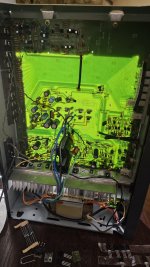Hmmm. No idea what the problem is. Just change the other channel and see?I did this on one channel, but the bias is way off (^-^)
But it will sound better to equip both stages of the power follower completely with BD 441, BD442 than to run only one last stage with the original transistors.
By the way - to all: A power amplifier can only be built for one range when it comes to sound: quiet or loud - or quiet to medium loud, medium loud, medium loud to very loud. I don't pay attention to "power values" here, but have cross-sections and resistances in mind.
An example of this NAD: You can add, as example, resistors to the emitters of the transes of the output stage - originally the intention is that the transistors run more stable, not drift in temperature - but which very often is not the problem. These resistors take part in the resistance of the circuit power supply - amplifier - loudspeaker (roughly) and with them I can more or less "tighten the speakers to the reins". It is usually useful to sound flow and musicality to give the speakers "leeway for swinging and distortion" instead of forcing them the bad sound of most amplifiers. you can also choose the transformer smaller or lower capacities of the power supply or choose smaller transistors or choose the cable diameters smaller or screw the speakers looser or set up more relaxed or or or - roughly;-)
A music system is a swinging and distortion circuit;-)
An example of this NAD: You can add, as example, resistors to the emitters of the transes of the output stage - originally the intention is that the transistors run more stable, not drift in temperature - but which very often is not the problem. These resistors take part in the resistance of the circuit power supply - amplifier - loudspeaker (roughly) and with them I can more or less "tighten the speakers to the reins". It is usually useful to sound flow and musicality to give the speakers "leeway for swinging and distortion" instead of forcing them the bad sound of most amplifiers. you can also choose the transformer smaller or lower capacities of the power supply or choose smaller transistors or choose the cable diameters smaller or screw the speakers looser or set up more relaxed or or or - roughly;-)
A music system is a swinging and distortion circuit;-)
Well I figured out why it's intermittent. All of my output stage transistors collectors on both channels are connected to the heat sink but only as diodes. One polarity. This was measured with the amplifier turned off. This does not prevent the right channel with unmodified transistors to play as intended.Some kind of miracle is going on here;-)
The voltage on the Left channel where I have removed the driver transistors actually swings all the way to the rail voltage. I think I ****** up something while experimenting. I ran just like 20 seconds with BD441, BD442 away from the heatsink and I burned those transes. I have replaced them, but as a result of this action and them shorting - I must have burned something more on this left channel (I know for sure one of the driver transistors Q411 is burned), hence my output is now all the way to the rail voltage. It takes a second or two climb there (or it takes my device to measure it), but it does get to over 27V. Goofy me keeps burning amplifiers 💀
Last edited:
Sorry.Well I figured out why it's intermittent. All of my output stage transistors collectors on both channels are connected to the heat sink but only as diodes. One polarity. This was measured with the amplifier turned off. This does not prevent the right channel with unmodified transistors to play as intended.
The voltage on the Left channel where I have removed the driver transistors actually swings all the way to the rail voltage. I think I ****** up something while experimenting. I ran just like 20 seconds with BD441, BD442 away from the heatsink and I burned those transes. I have replaced them, but as a result of this action and them shorting - I must have burned something more on this left channel (I know for sure one of the driver transistors Q411 is burned), hence my output is now all the way to the rail voltage. It takes a second or two climb there (or it takes my device to measure it), but it does get to over 27V. Goofy me keeps burning amplifiers 💀
I wish you will find the error soon.
There's nothing to be sorry about, this is so much fun that it's hard to even express. And I only really have one speaker right now anyway since the other one has been in the workshops for almost two months now, I shall have it ready in the upcoming week I think. So I've been listening to one channel all along. But if I'm able to modify it to reach a significant outcome, having done all the steps, I could repeat them all very easily if needed. Here it's about exploration and fun and listening and I have learnt so much already. I shall continue exploring even if it's just on one channel for now.
I have listened to BD441 and BD442 and they do sound much more refined and well, in many ways they sound very different, but I wouldn't necessarily say that the bass is much weightier or has more kick with them as output stage transistors. However I only listened briefly. I will come back to this question.
I'm really having a blast with this project and I'm sorry if I'm a little slow to get things right or understand basic concepts. For now at least I'm willing to follow along. I really do appreciate very much all the input. I know I'm not the best student, but at least we're having fun. At least I know I am.
I have listened to BD441 and BD442 and they do sound much more refined and well, in many ways they sound very different, but I wouldn't necessarily say that the bass is much weightier or has more kick with them as output stage transistors. However I only listened briefly. I will come back to this question.
I'm really having a blast with this project and I'm sorry if I'm a little slow to get things right or understand basic concepts. For now at least I'm willing to follow along. I really do appreciate very much all the input. I know I'm not the best student, but at least we're having fun. At least I know I am.
#45
And in terms of action taken, am I correct to understand that c439 and c440 have been pulled and replaced with wires or has there been something more done to the path that is marked blue?
I'm sorry, I don't quite understand this. I thought the mere disconnection of one of the fuses achieves the purpose of disconnecting a redundant transformer winding.The negative half-wave of the output stage is also fed from two power supply units. Here too, as with the positive voltage, I have replaced the regulated one with the large power supply unit. Here the 28 volts with the 28 volts;-)
Bottom side the blue marked line. Top side the white wire arcs that sit directly on the collector connection: instead C 439, C 440. Here, too, the aim is to avoid multiple modulations due to multiple power supply units.
And in terms of action taken, am I correct to understand that c439 and c440 have been pulled and replaced with wires or has there been something more done to the path that is marked blue?
C503 between the fuses removed. I don't think I hear any difference.
I have circumvented the potentiometer by connecting the inputs directly to the RCA connectors. I think there is a slight improvement in clarity, but could well be placebo. However, the capacitors seem to be discharging smoother now when the amplifier is turned off.
Horrible noise floor during operation is now much lower level, very much better.
Circumventing the fuse and connecting the transformer directly to the diodes seems to have given a little bit more life to the sound, but unfortunately the 3 minutes it took to do the job, I don't remember exactly what it sounded like before. I like how it sounds now.
Q 407, Q 408 replaced by BD441. Bass seems more defined, everything yes - blacker, more real, more detailed, more depth, definition, body and dimensionality to everything, the vocals especially are much more lifelike and emotional. The bass is more fun for sure.
Replacing the big power transes Q418 Q416 proves that the bass is actually lighter, softer now with these things as output transistors. However there seems to be a lot more information in the rest of of the frequency range, everything is more precise and more nuanced. I would much prefer listening this way to this amplifier than the big transistors running originally. The bass could even be called clearer, but the kick to me is a fair bit less powerful, the bass less textured, less tangible, less full bodied.
Regarding the (left) channel with completely negative bias - I have measured -27.5 V at the base and -27 V at the emitter of both the BD441 and BD442. The collectors receive -30.7 and 30.5 V. So it seems only the BD442 is actually turned on. But when I disconnect BD442 base - both bases are still reading 27.5 V.
Took me a few hours playing around and just looking at the board trying to understand what it even is, but it seems I found a couple of culprits.
The 200 uF cap C415 was inflated and sizzling. Luckily I bought a single 220 UF Panasonic for reasons I don't know.
And another culprit the Q409 (which I assume is some kind of bias regulating transistor) which wasn't working as a transistor anymore. Replaced by BD441. Now I read same collector voltages, the bases have BD442 -19 which then drops and stabilizes around -17.6V and BD441 has a contant -27.9V. Emitters BD442 and BD441 both have -19.5V.
I'd like to repair the left channel (which given the somewhat simplier design and my knowledge increasing everyday I believe I will manage at a point in time) for easier comparison between with vs without driver transistors and only then proceed with the removal of driver transes on the right channel as well.
Speaking of the right channel. I've never* heard more clear and detailed high frequencies from an amplifier. And voices too are spectacular. Some kind of break up at higher frequencies may also be present or this is just the recordings and I never heard it before. Sibilance on "s"es is so bad wow, but I need to listen more so to make sure this isn't just my recordings. And now having listened to more it seems good recordings are left in good condition by the amplifier - "s"es are totally beautiful and fine.
*except maybe an audiophile guy running lamps worth a few nice cars but it was years ago and I have no recollection, but it sounded nice - he was playing with Utopia Alto older speakers with upgraded beryllium tweeters. Him and his brother pretty serious audiophiles for around 30 years now.
I have circumvented the potentiometer by connecting the inputs directly to the RCA connectors. I think there is a slight improvement in clarity, but could well be placebo. However, the capacitors seem to be discharging smoother now when the amplifier is turned off.
Horrible noise floor during operation is now much lower level, very much better.
Circumventing the fuse and connecting the transformer directly to the diodes seems to have given a little bit more life to the sound, but unfortunately the 3 minutes it took to do the job, I don't remember exactly what it sounded like before. I like how it sounds now.
Q 407, Q 408 replaced by BD441. Bass seems more defined, everything yes - blacker, more real, more detailed, more depth, definition, body and dimensionality to everything, the vocals especially are much more lifelike and emotional. The bass is more fun for sure.
Replacing the big power transes Q418 Q416 proves that the bass is actually lighter, softer now with these things as output transistors. However there seems to be a lot more information in the rest of of the frequency range, everything is more precise and more nuanced. I would much prefer listening this way to this amplifier than the big transistors running originally. The bass could even be called clearer, but the kick to me is a fair bit less powerful, the bass less textured, less tangible, less full bodied.
Regarding the (left) channel with completely negative bias - I have measured -27.5 V at the base and -27 V at the emitter of both the BD441 and BD442. The collectors receive -30.7 and 30.5 V. So it seems only the BD442 is actually turned on. But when I disconnect BD442 base - both bases are still reading 27.5 V.
Took me a few hours playing around and just looking at the board trying to understand what it even is, but it seems I found a couple of culprits.
The 200 uF cap C415 was inflated and sizzling. Luckily I bought a single 220 UF Panasonic for reasons I don't know.
And another culprit the Q409 (which I assume is some kind of bias regulating transistor) which wasn't working as a transistor anymore. Replaced by BD441. Now I read same collector voltages, the bases have BD442 -19 which then drops and stabilizes around -17.6V and BD441 has a contant -27.9V. Emitters BD442 and BD441 both have -19.5V.
I'd like to repair the left channel (which given the somewhat simplier design and my knowledge increasing everyday I believe I will manage at a point in time) for easier comparison between with vs without driver transistors and only then proceed with the removal of driver transes on the right channel as well.
Speaking of the right channel. I've never* heard more clear and detailed high frequencies from an amplifier. And voices too are spectacular. Some kind of break up at higher frequencies may also be present or this is just the recordings and I never heard it before. Sibilance on "s"es is so bad wow, but I need to listen more so to make sure this isn't just my recordings. And now having listened to more it seems good recordings are left in good condition by the amplifier - "s"es are totally beautiful and fine.
*except maybe an audiophile guy running lamps worth a few nice cars but it was years ago and I have no recollection, but it sounded nice - he was playing with Utopia Alto older speakers with upgraded beryllium tweeters. Him and his brother pretty serious audiophiles for around 30 years now.
Last edited:
The woofers produce much greater magnetic field when louder bass is playing.
The phone produces up to ~60mG. It also made around 12 V/m but that was also just ambient all around the area.
RF was mostly quiet everywhere except for the phone producing huge peaks here and there.
The ELEC measurements were very stable and very weird in terms of locations. Also they mostly remained with amp turned off which I found strange.
MAG measurements fluctuated constantly. And woofers would of course make magnetic field according to the music.
The phone produces up to ~60mG. It also made around 12 V/m but that was also just ambient all around the area.
RF was mostly quiet everywhere except for the phone producing huge peaks here and there.
The ELEC measurements were very stable and very weird in terms of locations. Also they mostly remained with amp turned off which I found strange.
MAG measurements fluctuated constantly. And woofers would of course make magnetic field according to the music.
Attachments
-
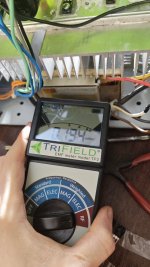 IMG_20240902_030909.jpg330.1 KB · Views: 54
IMG_20240902_030909.jpg330.1 KB · Views: 54 -
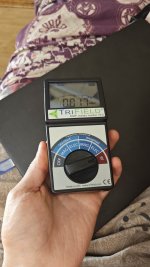 IMG_20240902_031002.jpg283.2 KB · Views: 62
IMG_20240902_031002.jpg283.2 KB · Views: 62 -
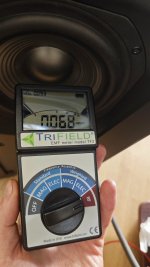 IMG_20240902_030937.jpg244.2 KB · Views: 53
IMG_20240902_030937.jpg244.2 KB · Views: 53 -
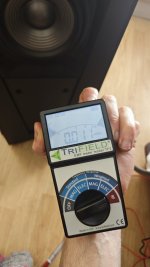 IMG_20240902_030922.jpg205.1 KB · Views: 49
IMG_20240902_030922.jpg205.1 KB · Views: 49 -
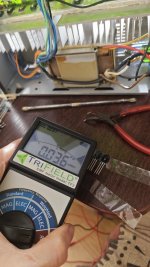 IMG_20240902_030859.jpg316.1 KB · Views: 49
IMG_20240902_030859.jpg316.1 KB · Views: 49 -
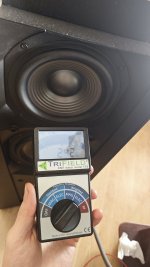 IMG_20240902_030620.jpg260.4 KB · Views: 53
IMG_20240902_030620.jpg260.4 KB · Views: 53 -
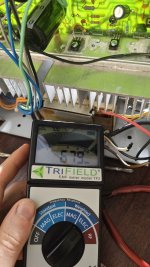 IMG_20240902_030606.jpg376.3 KB · Views: 48
IMG_20240902_030606.jpg376.3 KB · Views: 48 -
 IMG_20240902_030549.jpg290.3 KB · Views: 49
IMG_20240902_030549.jpg290.3 KB · Views: 49 -
 IMG_20240902_030546.jpg283.3 KB · Views: 49
IMG_20240902_030546.jpg283.3 KB · Views: 49 -
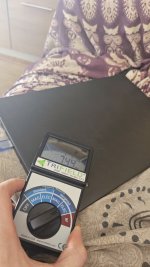 IMG_20240902_030535.jpg284.1 KB · Views: 45
IMG_20240902_030535.jpg284.1 KB · Views: 45 -
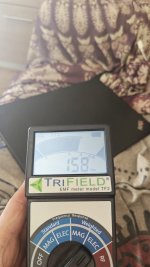 IMG_20240902_030520.jpg254.3 KB · Views: 45
IMG_20240902_030520.jpg254.3 KB · Views: 45 -
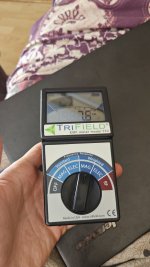 IMG_20240902_030307.jpg270.6 KB · Views: 44
IMG_20240902_030307.jpg270.6 KB · Views: 44 -
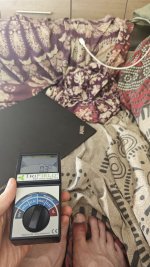 IMG_20240902_030256.jpg333.4 KB · Views: 43
IMG_20240902_030256.jpg333.4 KB · Views: 43 -
 IMG_20240902_030250.jpg232.7 KB · Views: 37
IMG_20240902_030250.jpg232.7 KB · Views: 37 -
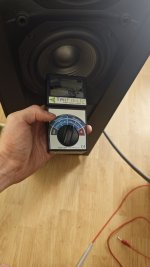 IMG_20240902_030235.jpg198 KB · Views: 48
IMG_20240902_030235.jpg198 KB · Views: 48 -
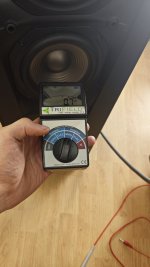 IMG_20240902_030222.jpg213.8 KB · Views: 44
IMG_20240902_030222.jpg213.8 KB · Views: 44 -
 IMG_20240902_030214.jpg210.6 KB · Views: 49
IMG_20240902_030214.jpg210.6 KB · Views: 49 -
 IMG_20240902_030204.jpg324.2 KB · Views: 47
IMG_20240902_030204.jpg324.2 KB · Views: 47 -
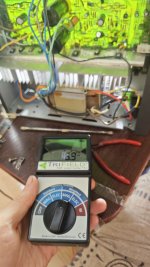 IMG_20240902_030156.jpg280.9 KB · Views: 46
IMG_20240902_030156.jpg280.9 KB · Views: 46 -
 IMG_20240902_030148.jpg273.5 KB · Views: 55
IMG_20240902_030148.jpg273.5 KB · Views: 55
Q413, Q414, the negative driver of the power stage, are feed by separat regulated psu.#45
I'm sorry, I don't quite understand this. I thought the mere disconnection of one of the fuses achieves the purpose of disconnecting a redundant transformer winding.
And in terms of action taken, am I correct to understand that c439 and c440 have been pulled and replaced with wires or has there been something more done to the path that is marked blue?
The positive half-wave is different: here the drivers are already fed by the unregulated large power supply unit.
I removed the bridges: blue marked line - Q 413, Q 414, and have set the white wires instead C 439, C 440 - to connect the big negative psu.
The EMF of the drivers: why many people with headphones get tinnitus, become slightly demented, get dizzy;-)The woofers produce much greater magnetic field when louder bass is playing.
The phone produces up to ~60mG. It also made around 12 V/m but that was also just ambient all around the area.
RF was mostly quiet everywhere except for the phone producing huge peaks here and there.
The ELEC measurements were very stable and very weird in terms of locations. Also they mostly remained with amp turned off which I found strange.
MAG measurements fluctuated constantly. And woofers would of course make magnetic field according to the music.
I don't know the speakers to be able to say what could be done to them.The bass runs out of steam as soon as there's even just a moderate kick 🦶🏿
The highs and voices as mentioned are spectacular
I'm hearing details in my recordings I never heard before
I would hear other power transients.
Or also try emitter resistors, 0.47 ohms, for example. That can also be purely a question of this tuning.
Maybe reconnect the second primary winding of the transformer (fuse in), then it should kick more;-)
I think it's the character of the transistors. Maybe my woofers draw a lot of current, they are two per channel, but I observe that this character remains present even on silent listening levels. The original end transistors had more body and kick in the low end although even those were pretty anemic (or I'm still in shock how bad the unmodified amp sounded in the bass region, I must admit they sounded pretty reasonable after the modifications), which gave the amplifier it's character.
Connecting the second primary winding doesn't add any benefit nor does it clearly retract anything from the sound, but in previous testing I think I heard a slight more mushiness with both connected. I don't listen that loud anyway. At least my NAD falls apart at higher volumes although with the new transistors - less so. I have the KEMET 22 mF caps in the Capital, so I'll pick them up this week.
Connecting the second primary winding doesn't add any benefit nor does it clearly retract anything from the sound, but in previous testing I think I heard a slight more mushiness with both connected. I don't listen that loud anyway. At least my NAD falls apart at higher volumes although with the new transistors - less so. I have the KEMET 22 mF caps in the Capital, so I'll pick them up this week.
I continued working on the PA-940 today. And I almost overdid it - it sounded very dark at the end. But with some knowledge of the qualities of the other parts, I'm sure that it's mainly due to the cabling: the wires are tinned strands and the lengths are channel unsymmetric. Then there are unnecessary transitions due to soldering support points and so on.
It basically takes decades to get an overview of the entire system and: if you change one part, you change all the parts at that moment: you don't know why it sounds different. Without experience, you're ******;-)
It basically takes decades to get an overview of the entire system and: if you change one part, you change all the parts at that moment: you don't know why it sounds different. Without experience, you're ******;-)
Mine are due to arrive on Friday. I will report back soon;-)KEMET 22 mF caps in the Capital, so I'll pick them up this week.
Q410 replacemed by BD441 - again as in Q407, Q408 - more clarity and focus and aliveness everywhere and bass is more enjoyable too.
I then proceeded to remove the driver transistors on the working (right) channel and found out indeed that the sound became more musical for lack of a better word, more interesting, more nuanced. However I listened very briefly - around 2 minutes maybe and my transistors burned. I think it's because I forgot to set the right bias, but I don't really know, it's very mysterious to me, but hopefully it'll work after replacing the BD441 BD442. I don't think my bias regulators are even enough. I need to get some of those trimmers. So I'm left with no working channel and ran out of BD441.
Later on I found some more faults with the Left channel - turns out that as much as two PCB paths were broken - the base of output BD442 wasn't receiving signal and also the bridge we created in place of C437 was broken (likely the real culprit), so I fixed that. Replaced burnt BD441 with BD139 and I'm happy to say I'm back in working order on the left channel, this time I didn't forget to adjust the bias, but it wasn't much off at all anyway. Again it feels mysterious that the right channel burned after a couple of minutes, probably not a bias issue. So now I'm playing with BD139 on the previously faulty channel (with no driver transistors), but that's much better than nothing.
Anyway the last configuration played very well. I would find extreme differences between 44.1 kHz sample rate and 96 or 192 and although I couldn't hear much benefit between 192 FLAC and DSD in my years of listening, I think I can hear now even improvements in higher bitrate than 192 FLACs. Recording quality is also extremely obvious and is more important than the sample rate as long as it's at least 44.1 kHz. With driver transistors it was all beautiful and I played for around 24 hours in this configuration. Without them it's too early to comment about preference since I have around 3 minutes of experience (with the BD441s), but it sounded like it contained even more information, even richer colors and more nuance and fluidity.
BD139 aren't horrible, but sound less black and focused, warmer, but less depth, a lot less body, everything's flatter. But still high resolution or it's the one BD442 that's still giving that resolution. Occasionally I'm hearing pops though, similar to vinyl pops, but louder and more sparse and coming from the amplifier, which is a bit scary, but no trouble yet. I'm waiting for my transistors to arrive to continue working on this amplifier.
I wish the right channel didn't burn so soon after removing driver transes, because I still had pretty fresh in my memory how it played with them. Oh well, I guess I'll have to experiment more then. But the initial impression was that without them the sound was more clear, defined, lifelike.
I then proceeded to remove the driver transistors on the working (right) channel and found out indeed that the sound became more musical for lack of a better word, more interesting, more nuanced. However I listened very briefly - around 2 minutes maybe and my transistors burned. I think it's because I forgot to set the right bias, but I don't really know, it's very mysterious to me, but hopefully it'll work after replacing the BD441 BD442. I don't think my bias regulators are even enough. I need to get some of those trimmers. So I'm left with no working channel and ran out of BD441.
Later on I found some more faults with the Left channel - turns out that as much as two PCB paths were broken - the base of output BD442 wasn't receiving signal and also the bridge we created in place of C437 was broken (likely the real culprit), so I fixed that. Replaced burnt BD441 with BD139 and I'm happy to say I'm back in working order on the left channel, this time I didn't forget to adjust the bias, but it wasn't much off at all anyway. Again it feels mysterious that the right channel burned after a couple of minutes, probably not a bias issue. So now I'm playing with BD139 on the previously faulty channel (with no driver transistors), but that's much better than nothing.
Anyway the last configuration played very well. I would find extreme differences between 44.1 kHz sample rate and 96 or 192 and although I couldn't hear much benefit between 192 FLAC and DSD in my years of listening, I think I can hear now even improvements in higher bitrate than 192 FLACs. Recording quality is also extremely obvious and is more important than the sample rate as long as it's at least 44.1 kHz. With driver transistors it was all beautiful and I played for around 24 hours in this configuration. Without them it's too early to comment about preference since I have around 3 minutes of experience (with the BD441s), but it sounded like it contained even more information, even richer colors and more nuance and fluidity.
BD139 aren't horrible, but sound less black and focused, warmer, but less depth, a lot less body, everything's flatter. But still high resolution or it's the one BD442 that's still giving that resolution. Occasionally I'm hearing pops though, similar to vinyl pops, but louder and more sparse and coming from the amplifier, which is a bit scary, but no trouble yet. I'm waiting for my transistors to arrive to continue working on this amplifier.
I wish the right channel didn't burn so soon after removing driver transes, because I still had pretty fresh in my memory how it played with them. Oh well, I guess I'll have to experiment more then. But the initial impression was that without them the sound was more clear, defined, lifelike.
Last edited:
Don't take this the wrong way, but your soldering technique needs some work.
These connections are not reliable:

The joints should look more like this:


There's nothing worse than wasting precious hobby time than chasing a fault because of a bad joint.
These connections are not reliable:
The joints should look more like this:
There's nothing worse than wasting precious hobby time than chasing a fault because of a bad joint.
Well the intention behind it is obviously not security, but supposed or real sound benefits, otherwise nobody would do it like that.
Speaking of soldering, I just yesterday found out silver solder is less conductive than simple lead free 0.7% or even 3% copper solder. In fact, the higher the silver (or copper for that matter) content like mundorf supreme (10% silver) for example - the less conductive it is. And I thought of buying a big spool of it. I'm glad I didn't. Turns out pure tin is the most conductive, but also the least reliable because of mechanical properties and because of tin whiskers which can cause catastrophic failures in aviation for example, so that is largely why those standards are adopted - for safety, not for audio quality.
I have some litz wire which I want to use for amplifiers, it's a great sounding wire, but I was never able to properly solder litz. Well, now I ordered a solder pot. I'm hoping to use pure tin 9999 that I found really cheaply from some old Soviet lab. Wish me luck. So far, I was never really able to properly solder any litz material. I'm hoping the solder pot is going to be a game changer. I have some cables I need to reterminate and as I said - this wire will make a very excellent output/power supply cable for amplifiers.
Speaking of soldering, I just yesterday found out silver solder is less conductive than simple lead free 0.7% or even 3% copper solder. In fact, the higher the silver (or copper for that matter) content like mundorf supreme (10% silver) for example - the less conductive it is. And I thought of buying a big spool of it. I'm glad I didn't. Turns out pure tin is the most conductive, but also the least reliable because of mechanical properties and because of tin whiskers which can cause catastrophic failures in aviation for example, so that is largely why those standards are adopted - for safety, not for audio quality.
I have some litz wire which I want to use for amplifiers, it's a great sounding wire, but I was never able to properly solder litz. Well, now I ordered a solder pot. I'm hoping to use pure tin 9999 that I found really cheaply from some old Soviet lab. Wish me luck. So far, I was never really able to properly solder any litz material. I'm hoping the solder pot is going to be a game changer. I have some cables I need to reterminate and as I said - this wire will make a very excellent output/power supply cable for amplifiers.
Last edited:
- Home
- Amplifiers
- Solid State
- Modifying a NAD 302
